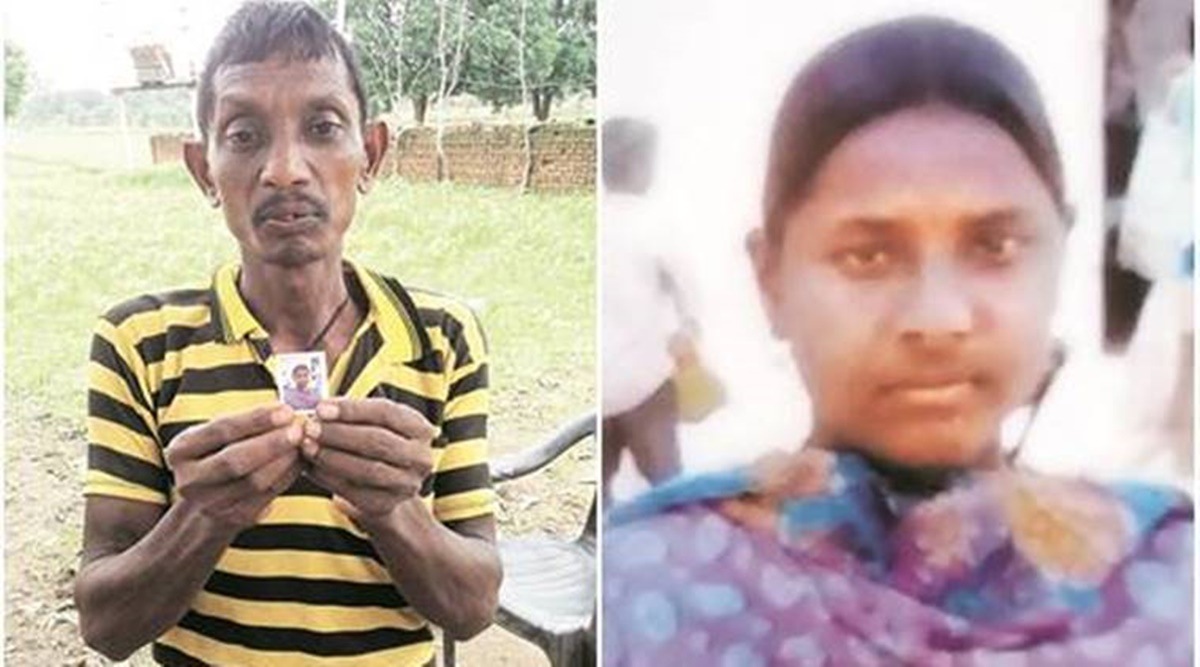 Meena Khalkho (right) and her father.
Meena Khalkho (right) and her father.The acquittal of two policemen on May 5, 2022, by a Raipur sessions court over the murder of 16-year-old Meena Khalkho in July 2011, is a sign of the times. The court observed that “despite sufficient suspicion of the accused having committed the offence” the duo was let off because of “improper investigation” and “lack of evidence”. With this, a decade-long battle for justice that Meena’s family initiated after they discovered her brutal death in a government hospital in Balrampur on the morning of July 6, 2011, has ended fruitlessly. It bears remembering that the 2015 Justice Anita Jha’s report had conclusively stated that Meena was shot by the police at close range in the intervening night of July 5 and 6, 2011. The report had debunked the police’s claim that Meena was a Naxalite and that she had been grievously wounded in an encounter that had happened that night near the Cherha nullah, a few kilometres from her village, Karcha, in Chhattisgarh’s Sarguja district. The report reiterated the family and the villagers’ claim that the police was guilty, and it was hoped that the CID would conduct a fair investigation. I
Instead, the present judgment has demonstrated how the police deliberately botches an investigation for protecting its guilty personnel, a point also noted in an editorial (‘Bring full closure’, IE, May 24).
Underlying the issue of subversion of justice is an obvious question that was obfuscated: Why was Meena killed? This stark question of intent which is logically related to the fact of the killing was never at the centre of any investigation, inquiry, or trial. The question remained unimportant even after the 2015 report established that the police had killed her knowing that she was not a Naxalite. If one returns to crucial points raised by the family and by the Chhattisgarh Bachao Andolan through its fact-finding in 2011, then it is obvious that there were serious tell-tale signs which were never picked up. For instance, it is known that Meena went off on a cycle in the evening to meet her friend but never returned. While her cycle was never found, and it was clear that she never went to her friend’s place, her post-mortem findings showed the presence of sperm and the possibility of sexual intercourse with more than one person. There were some other facts: That the police paid hush money for the funeral and Rs two lakh was given to the family even before proper investigations were undertaken. Since the villagers of Nawadih heard three gunshots in the early hours of the morning followed by threats from the police preventing them from venturing out, the discovery of a grievously wounded Meena suggests that she could have been gang raped by the police and shot at to pass her off as a Naxalite. More importantly, the discrepancy over her clothing, as to what she left home in and what she was seen wearing in the primary health centre, strengthens the suggestion of a cover up.
The police gave itself a clean chit a few months after the incident as the forensic examination could not match the DNA samples of the policemen with the smear slides of the deceased. Importantly, the 2015 report had urged that an inconclusive finding ought not to be treated as clinching evidence (para 45, Kumari Meena Khalkho Jaanch Aayog). The failure in probing Meena Khalkho’s possible gang rape and murder was not limited to the fact that the police acted as judge and jury over its own conduct; the problem was that the ghost of female conduct was raked up to divert attention from investigating a serious sexual crime. Meena’s supposed “friendship” with a truck driver, or drivers, became part of a political debate in which the then state home minister, Nankiram Kanwar, had said that she “had relations” with truck drivers and that the medical examination had confirmed her “habitual” status. He had also asked why she was away from her home at 2.15 in the morning. No inquiry was instituted to examine the “habitual” conduct of the policemen.
Best of Express Premium
It needs to be remembered that it is not “habitual” female conduct that obstructs fair and impartial inquiry into sexual crimes, but “habitual” misogyny, found institutionally and socially, that routinely prevents the possibility of a level-playing field. As evident in this case, Meena’s “friendship” was a digressive tactic; it was meant to divert attention from the question of impunity of the police. Given the Herculean nature of the prevailing laws of evidence, providing “proof” is almost an impossibility. Consequently, institutional inquiries inevitably exonerate the guilty, which in turn, strengthens impunity. But it need not be so if one had paid attention to what Meena’s father stated in court: That his daughter had been detained by the police, that she was gangraped and when she fell unconscious, killed (State of Chhattisgarh vs. Nikodim Khes and others). The gang rape charges were dropped, and the Prevention of Atrocities Act was never applied even though it is known that Meena belonged to the impoverished Oraon community and that she was a Class V dropout.
Why was Meena killed and who killed her are questions we will never know the answers to, but it is imperative to ask for the truth. We owe it to the dead.
Purkayastha is an activist and academic and Chakravarti is a feminist historian and filmmaker
- The Indian Express website has been rated GREEN for its credibility and trustworthiness by Newsguard, a global service that rates news sources for their journalistic standards.

